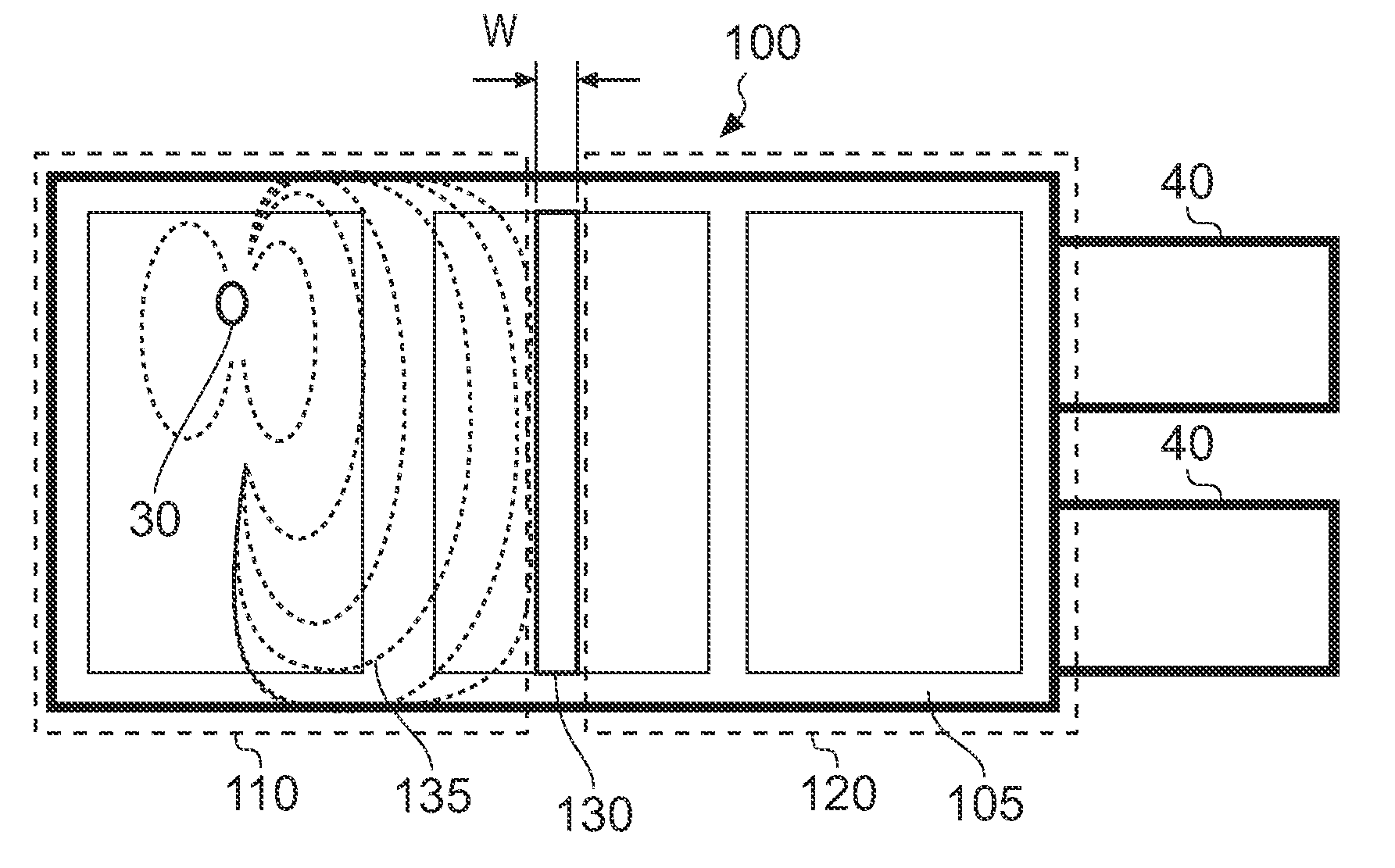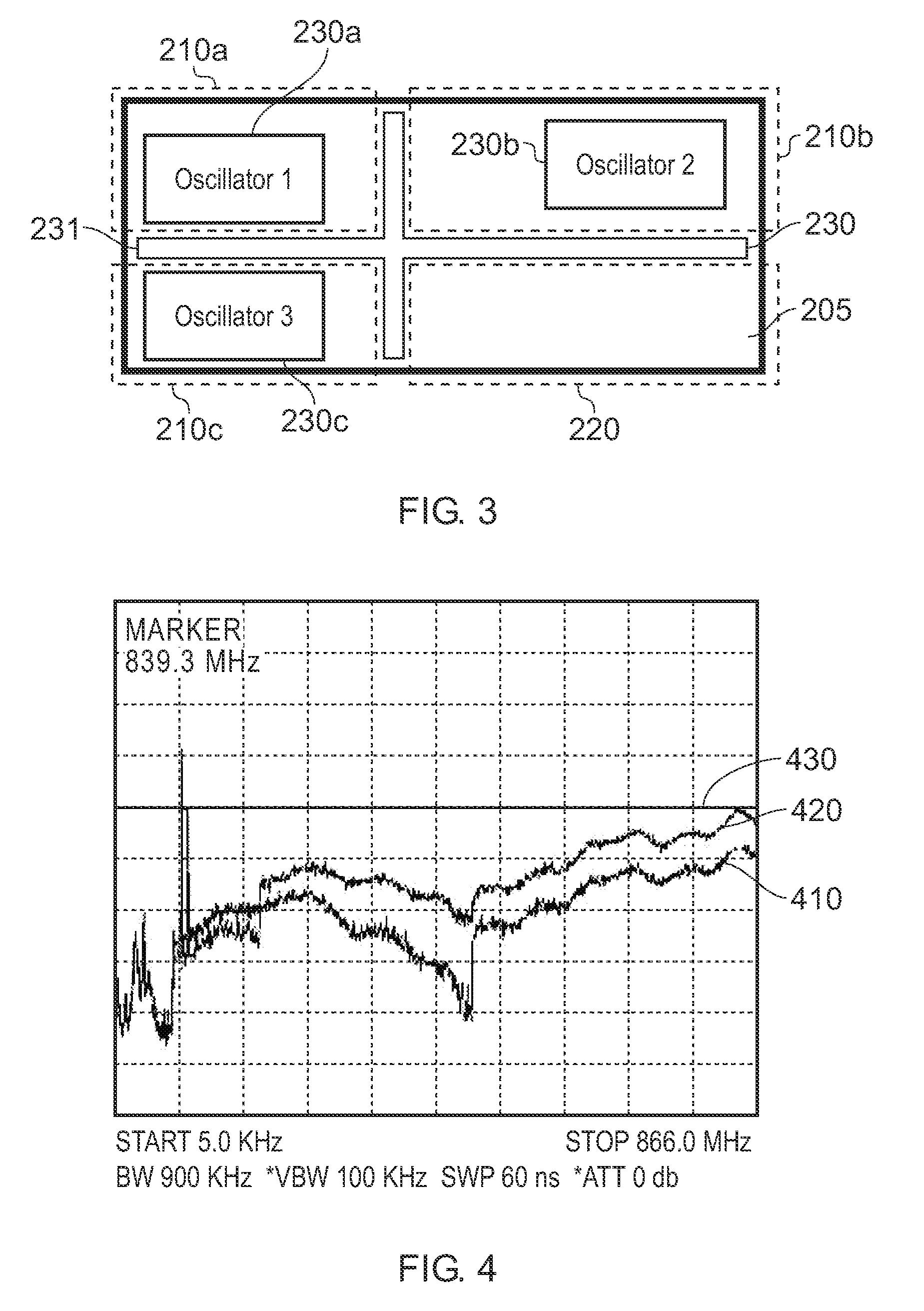Tuner
a tuner and module technology, applied in the field of tuners, can solve the problems of unexpected increase in internal induced eddy currents within the casing, and achieve the effects of reducing the proximity effect of miniaturization, reducing the separation between the components, and reducing the size of the form factor
- Summary
- Abstract
- Description
- Claims
- Application Information
AI Technical Summary
Benefits of technology
Problems solved by technology
Method used
Image
Examples
Embodiment Construction
[0021]FIG. 1 shows a schematic section through a tuner module 10. The module has a substrate 20, on which are mounted various components. Towards one end of the module is located an oscillator coil 30. The oscillator coil acts as the local oscillator for the super-heterodyne receiver, in order to provide frequency conversion, prior to signal processing in the baseband. Towards the opposite end of the module, is located an input connector, which as shown here is a splitter aerial 40. Between the aerial 40 and the oscillator 30 are an input filter sub-section 60 and a bandpass filter sub-section 65. The components forming the tuner circuit are protected by a casing, which as shown here has a bottom section 80 and a top section 90. Typically, the casing further includes thick metal barriers 95, in order to better contain lateral radiation within the tuner module, and limit propagation of interference or leakage from the oscillator to the other components or subsections.
[0022]Typical di...
PUM
 Login to View More
Login to View More Abstract
Description
Claims
Application Information
 Login to View More
Login to View More - R&D
- Intellectual Property
- Life Sciences
- Materials
- Tech Scout
- Unparalleled Data Quality
- Higher Quality Content
- 60% Fewer Hallucinations
Browse by: Latest US Patents, China's latest patents, Technical Efficacy Thesaurus, Application Domain, Technology Topic, Popular Technical Reports.
© 2025 PatSnap. All rights reserved.Legal|Privacy policy|Modern Slavery Act Transparency Statement|Sitemap|About US| Contact US: help@patsnap.com



